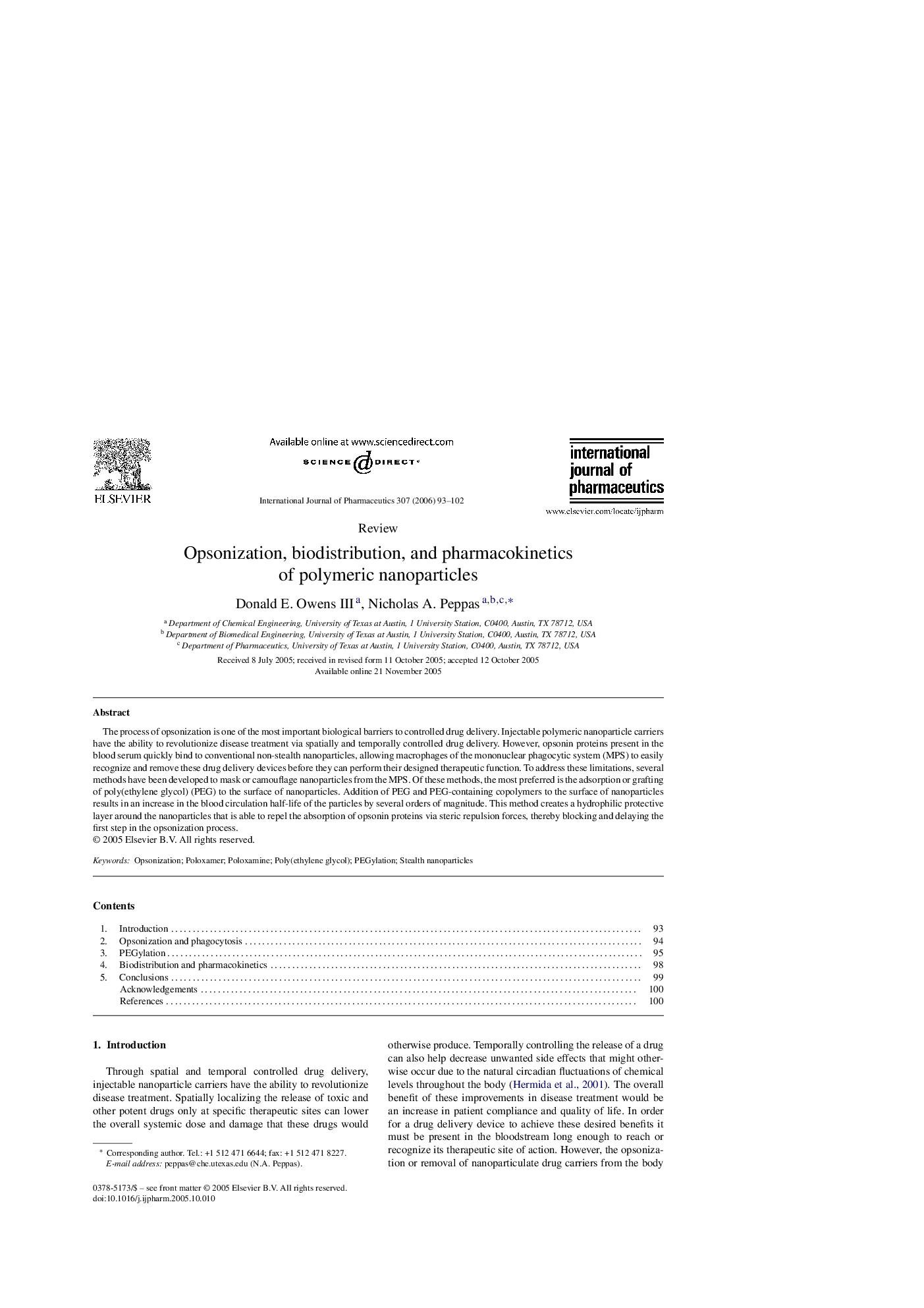| کد مقاله | کد نشریه | سال انتشار | مقاله انگلیسی | نسخه تمام متن |
|---|---|---|---|---|
| 2507206 | 1557546 | 2006 | 10 صفحه PDF | دانلود رایگان |

The process of opsonization is one of the most important biological barriers to controlled drug delivery. Injectable polymeric nanoparticle carriers have the ability to revolutionize disease treatment via spatially and temporally controlled drug delivery. However, opsonin proteins present in the blood serum quickly bind to conventional non-stealth nanoparticles, allowing macrophages of the mononuclear phagocytic system (MPS) to easily recognize and remove these drug delivery devices before they can perform their designed therapeutic function. To address these limitations, several methods have been developed to mask or camouflage nanoparticles from the MPS. Of these methods, the most preferred is the adsorption or grafting of poly(ethylene glycol) (PEG) to the surface of nanoparticles. Addition of PEG and PEG-containing copolymers to the surface of nanoparticles results in an increase in the blood circulation half-life of the particles by several orders of magnitude. This method creates a hydrophilic protective layer around the nanoparticles that is able to repel the absorption of opsonin proteins via steric repulsion forces, thereby blocking and delaying the first step in the opsonization process.
Journal: International Journal of Pharmaceutics - Volume 307, Issue 1, 3 January 2006, Pages 93–102